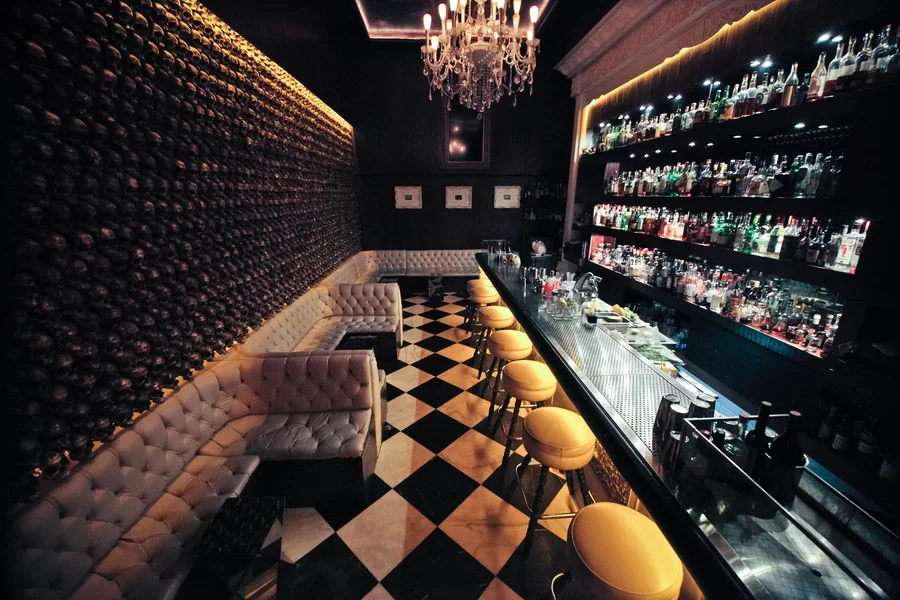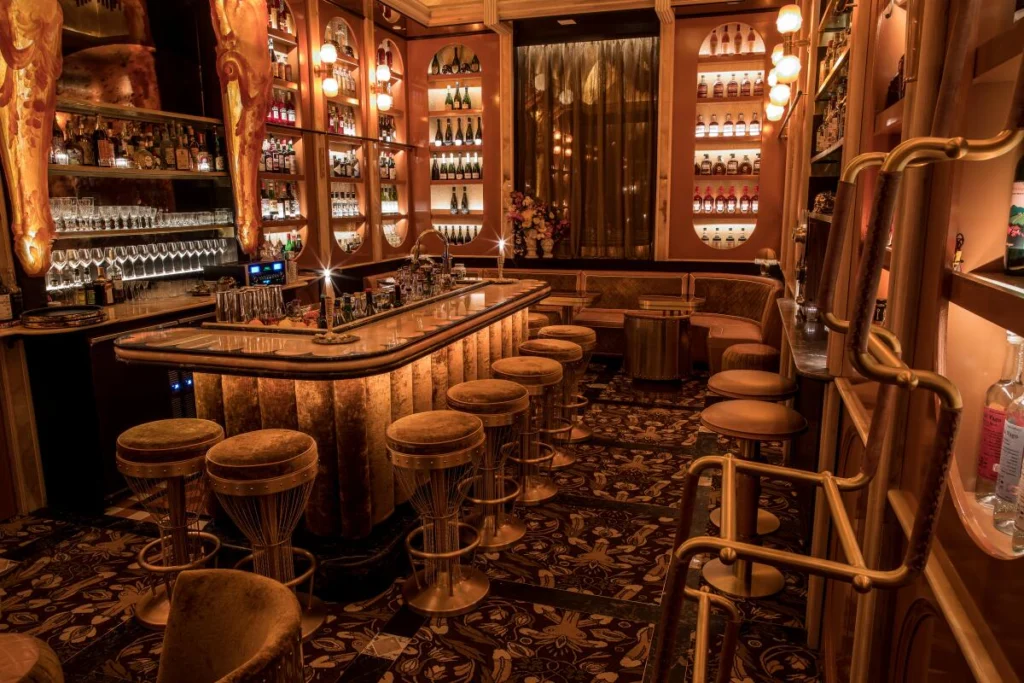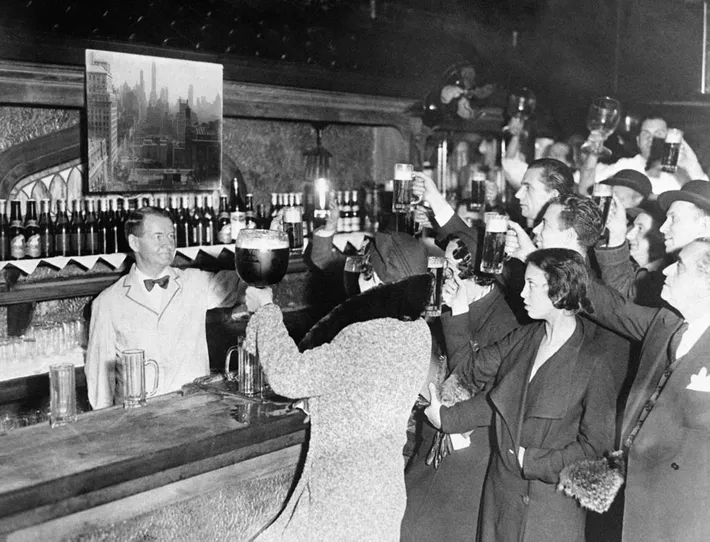In the roaring twenties of the United States, Speakeasy emerged as clandestine establishments shrouded in secrecy, serving alcohol during the prohibition era. These hidden bars became symbols of rebellion against the stringent laws prohibiting the sale and consumption of alcoholic beverages. Today, the legacy of speakeasies continues to captivate the imagination of many, offering a glimpse into a bygone era of clandestine revelry.
The Secret World of Speakeasy
Operating in the shadows of society, speakeasies adopted various strategies to evade law enforcement and maintain secrecy. These clandestine bars were often hidden behind unassuming facades, accessible only to those who knew the secret passwords or had connections to the underground network. Inside, patrons indulged in bootlegged liquor, jazz music, and lively entertainment, creating an atmosphere of defiance and excitement.
Atmosphere in speakeasies
The atmosphere in speakeasies was characterized by secrecy, intimacy, and a vintage aesthetic that harked back to the Roaring Twenties. These hidden bars were often dimly lit, creating a mysterious and alluring ambiance. The decor typically featured vintage elements like wood bars, high shelves displaying an array of bottles, paisley wallpaper, chandeliers, mirrors, and vintage portraits. The lighting was kept low to allow for privacy and intimate conversations, enhancing the clandestine feel of these establishments.
Speakeasies were known for their discreet entrances and secret codes required for entry, adding an element of excitement and exclusivity for patrons. Some speakeasies used doors disguised as bookcases, telephone booths, or sliding walls to maintain their secretive nature. Inside, patrons often drank out of teacups, coffee mugs, or brown-bagged beer bottles to maintain discretion. The use of such vessels added to the covert charm of these hidden bars.
Modern speakeasies today continue to emulate this enigmatic atmosphere by incorporating hidden entrances, vintage decor, and a creative beverage menu that showcases both classic and innovative cocktails reminiscent of the Prohibition era. The enduring fascination with speakeasies lies in their ability to transport patrons to a bygone era rich with history, nostalgia, and a sense of adventure.
Iconic Speakeasy Features
Hidden Entrances
One of the defining features of speakeasies was their covert entrances, concealed from the prying eyes of authorities. These entrances were often disguised as innocuous storefronts or accessed through unmarked doors hidden in alleyways. Some speakeasies even required patrons to enter through unconventional means, such as trapdoors or secret passages.
Passwords and Codes
To gain entry into a speakeasy, patrons were often required to provide a secret password or code known only to those within the inner circle. These passwords were changed regularly to prevent infiltration by law enforcement officials, adding an element of exclusivity and mystery to the speakeasy experience.
Dimly Lit ambiance
Once inside, patrons were enveloped in an intimate atmosphere characterized by dim lighting, plush furnishings, and an air of secrecy. The subdued lighting not only created a sense of anonymity but also helped conceal the identities of patrons, further adding to the clandestine nature of speakeasies.
Crafted Cocktails
Despite the prohibition laws, speakeasies continued to serve a variety of alcoholic beverages, albeit through illicit means. Mixologists at these establishments crafted inventive cocktails using homemade spirits, flavored syrups, and fresh ingredients, earning speakeasies a reputation for innovation and creativity in mixology.

Famous speakeasies
Some famous speakeasies from the Prohibition era include:
- El Fey Club (New York): Hosted by Texas Guinan, this speakeasy was a renowned illegal establishment in New York City during the 1920s. It attracted celebrities like Babe Ruth, Charles Lindbergh, and Charlie Chaplin.
- The Cotton Club (Harlem, New York): Despite being located in a predominantly black neighborhood, the Cotton Club catered exclusively to white clientele and featured performances by legendary artists like Cab Calloway, Duke Ellington, and Louis Armstrong.
- PDT (Please Don’t Tell) (New York): Known for its innovative cocktails and hidden entrance through a phone booth in a hot dog joint, PDT is a modern speakeasy that pays homage to the Prohibition era with its unique ambiance and creative drinks.
- Bank Bar (Manila, Philippines): Located in Manila’s Fort district, Bank Bar surprises patrons with its entrance through a 7-Eleven store. Inside, it offers a large bar selection, a vibrant crowd, a cigar room, and DJs spinning tunes.
- Ounce (Taipei, Taiwan): Ounce is a hidden cocktail bar in Taipei accessed through a secret door within a neighborhood cafe, offering a unique and exclusive experience for visitors.
- Lulu White (Paris): This Parisian speakeasy is known for its intriguing entrance and classic cocktails served with a modern twist, creating an atmosphere of exclusivity and sophistication.
- Foxglove (Hong Kong): Foxglove in Hong Kong is another hidden gem that combines classic cocktails with an elegant ambiance, attracting patrons seeking a refined drinking experience.
These historical and modern speakeasies offer patrons an escape into the clandestine world of the Prohibition era with their secretive entrances, vintage decor, and creative cocktail menus.
The Enduring Legacy of Speakeasies
While the prohibition era may have come to an end, the legacy of speakeasies lives on in the modern-day cocktail culture. Many contemporary bars and lounges pay homage to the clandestine charm of speakeasies, recreating their ambiance and offering classic cocktails with a modern twist. The allure of secrecy and rebellion continues to attract patrons seeking an immersive experience steeped in history and intrigue.
Preserving the Legacy
While Prohibition may have ended with the repeal of the 18th Amendment in 1933, the allure of speakeasies continues to captivate contemporary audiences. Today, modern interpretations of speakeasies pay homage to their clandestine predecessors, blending vintage aesthetics with innovative mixology to recreate the ambiance of the Roaring Twenties. By preserving the legacy of speakeasies, we ensure that these enigmatic establishments remain an integral part of America’s cultural tapestry for generations to come.
Do speakeasies still exist?
Speakeasies still exist today, although they have evolved from their Prohibition-era origins. Modern speakeasies often recreate the ambiance and style of the clandestine bars of the 1920s, offering patrons a taste of the past with a contemporary twist. While true speakeasies, which were illegal establishments selling alcohol during Prohibition, no longer exist, modern speakeasies maintain elements like hidden entrances, vintage decor, and a sense of exclusivity.
Today’s speakeasies can be found inside other establishments, such as restaurants, hotels, barbershops, or even luxury apartment buildings, adding to their allure and exclusivity. These modern interpretations of speakeasies focus on creating an atmosphere of escape, exclusivity, and nostalgia for patrons seeking a unique drinking experience. The enduring popularity of speakeasies is driven by the fantasy of exclusivity and the desire to step into a different world, making them a sought-after destination for those looking for a special night out.
Difference between modern speakeasies and original ones
Modern speakeasies differ from their Prohibition-era counterparts in several ways, although they still retain some similarities. Here are some key differences:
- Legality: Modern speakeasies operate legally, while the original speakeasies were illegal establishments selling alcohol during Prohibition.
- Hidden entrances: While both modern and original speakeasies may have hidden entrances, modern speakeasies are easier to find due to their marketing and reputation.
- Reservations and apps: Modern speakeasies often allow patrons to make reservations or use apps for entry, which is a departure from the original speakeasies’ requirement for secrecy.
- Quality of alcohol: The quality of alcohol in modern speakeasies is generally better, as they are not subject to the same restrictions and dangers as the original speakeasies, where spirits were often watered down or adulterated with dangerous chemicals.
- Aesthetics: Modern speakeasies often maintain a vintage aesthetic, with decor harking back to the Roaring Twenties, but they may not be as secretive or exclusive as the original speakeasies.
- Cocktails: Modern speakeasies often feature creative and expertly curated cocktail menus, while the original speakeasies served a mix of spirits, water, and juice to mask the harsh taste of bootlegged alcohol.
In summary, modern speakeasies are a reinterpretation of the original, offering patrons a taste of the past with a contemporary twist. They may share some similarities, such as hidden entrances and vintage decor, but they are not as secretive or exclusive as the original establishments, which operated illegally during Prohibition.

Frequently Asked Questions (FAQs)
1. What was the significance of speakeasies during the Prohibition era?
Speakeasies held significant cultural and social importance during the Prohibition era, providing a clandestine haven for individuals to indulge in alcoholic beverages despite the nationwide ban. Beyond serving as venues for illicit drinking, speakeasies became symbols of rebellion, fostering a sense of camaraderie among patrons who defied Prohibition laws.
2. How did speakeasies maintain secrecy and evade law enforcement?
Speakeasies employed various tactics to maintain secrecy and evade law enforcement scrutiny. These included hidden entrances, secret passwords, and discreet communication channels to ensure that only trusted individuals gained entry. Additionally, speakeasy owners often cultivated relationships with corrupt officials or paid bribes to avoid detection and raids.
3. Who were some notable figures associated with speakeasies during the Prohibition era?
Several notable figures, including gangsters, entertainers, and politicians, were associated with speakeasies during the Prohibition era. One of the most infamous figures was Al Capone, the Chicago mobster who controlled a vast network of speakeasies and illicit alcohol distribution channels. Other notable personalities included jazz musicians, flappers, and bootleggers who frequented or operated speakeasies.
4. What is the legacy of speakeasies in contemporary culture?
The legacy of speakeasies continues to resonate in contemporary culture, particularly in the realm of mixology and cocktail culture. Modern interpretations of speakeasies pay homage to their clandestine predecessors, blending vintage aesthetics with innovative cocktail creations. Moreover, the rebellious spirit and sense of exclusivity associated with speakeasies persist, influencing trends in nightlife and socializing.
Conclusion
In conclusion, Speakeasy represents more than mere venues for clandestine revelry; they serve as enduring symbols of defiance, camaraderie, and cultural innovation. By diving into the rich history and cultural impact of speakeasies, we gain a deeper appreciation for the indelible mark they have left on American society, both past and present.

